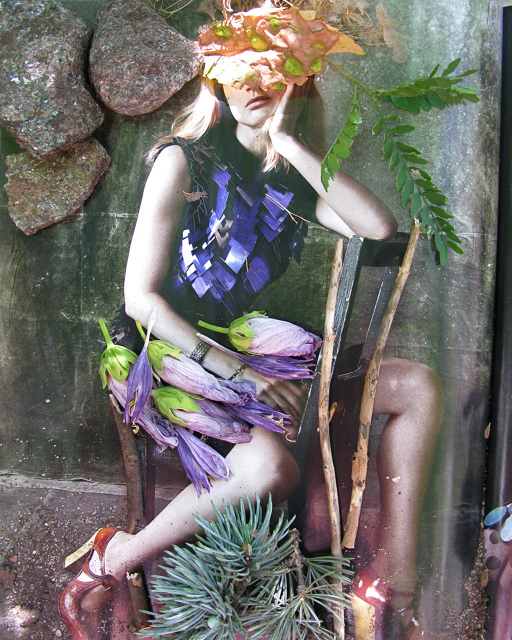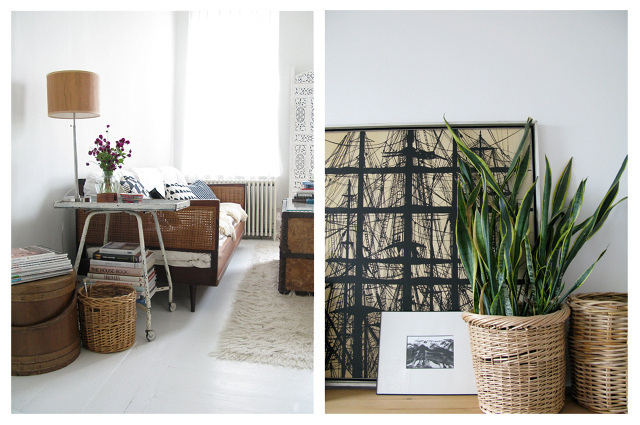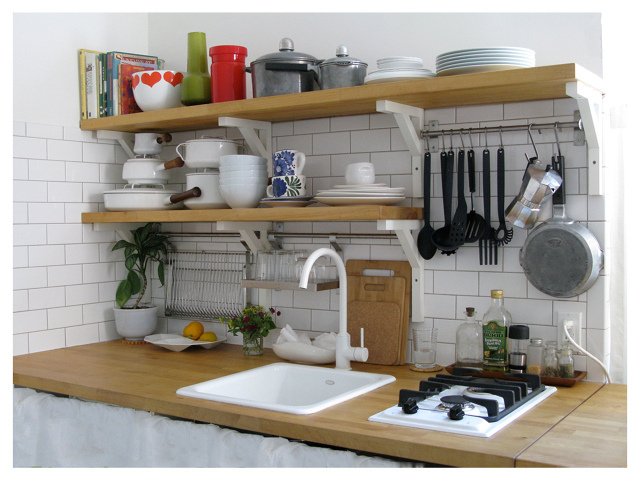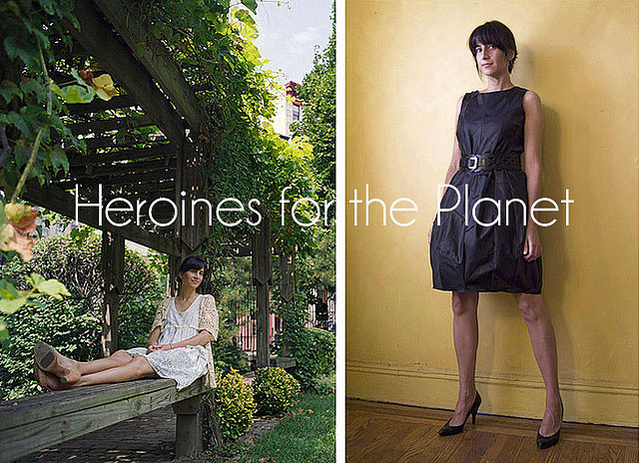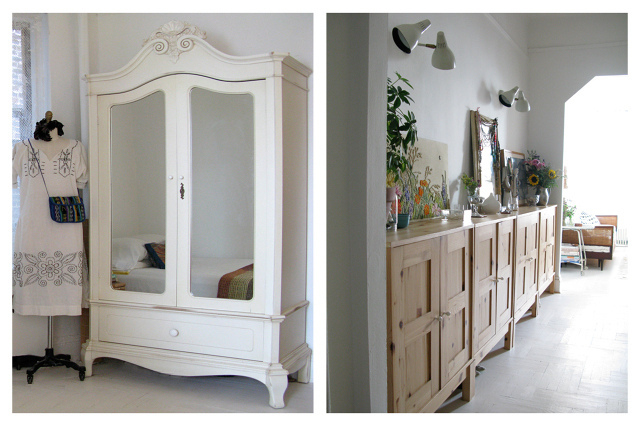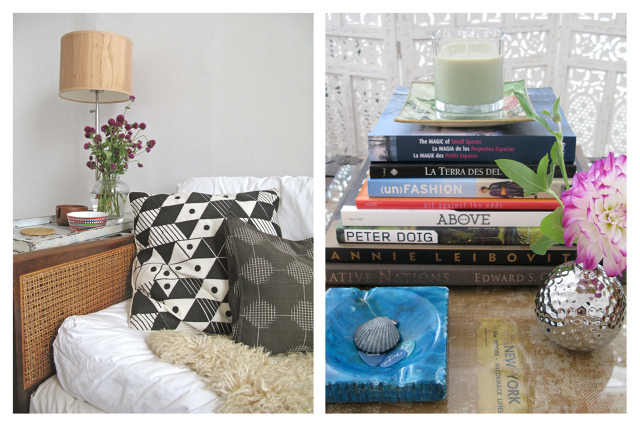
Heroines for the Planet: Jill Danyelle, Eco Interior Designer
Jill Danyelle is, quite simply, too talented to fail. Her artistic prowess, indomitable desire to evolve, and adoration of nature led her to recently launch the interior design business she was always meant to create.
She has triumphed as a therapist, eco-fashion designer and green fashion writer, and with hobbies that include art, photography and travel, it seems apropos that interior design would transform into her next business venture.
Jill recently found some time in her busy schedule to share with us how she incorporates sustainability into her projects, the challenges she’s faced as an entrepreneur, where she turns to for design inspiration, and how her travels have shaped her.
Lindsay: You started your career as an occupational therapist, then studied fashion design with a focus on ecology. What drew you to interior design?
Jill: Before I went to graduate school to become a therapist, I studied fine art in high school and college, so I’ve always had the desire to be creative. After graduate school I worked as a therapist and kept artistic hobbies, but at a certain point I felt that my creativity became too marginalized. I wasn’t happy and knew I needed to make a change. I experimented with some other careers, such as fashion design and writing/editing, but ended up crossing them off of the list for a variety of reasons.
I have always been drawn to design and style. I love to hunt things down and mix them together, but I like the problem solving and functional aspects of designing a space, too. I was thinking more and more about how design impacts our lives as I began to edit the contents of my own life and change the space I live in. One day it just hit me. I thought, “I like to work with people and I like to design spaces, maybe I should try this.” I felt I had something to offer, so I started doing interior design for free with friends and friends of friends and it took off from there.
Lindsay: Can you tell me about your new interior design business? Why did you decide to start your own firm?
Jill: Wow, firm sounds so… big. It is just me and some contractors I have on speed dial. I hope I never lose the intimacy of that as I really enjoy getting to know my clients. I have been an independent contractor for most of my professional life, even as a therapist. It just suits me, as I really value my independence.
Additionally, without an interior design degree and work history it is difficult to get a firm to hire you as an employee. I also know what I value in my work, so if you narrow things down to the firms like the Cape Cod Interior Designer, that I would want to work for, the opportunities become even fewer, so the choice was kind of made for me. I decided to work for free on my own in order to gain experience and it ended up paying off. Working independently with paying clients was the logical next step.
LB: I pulled this quote from one of your blog posts. You said, “I always say that it is easy to be a critic, but to put energy into a creation and launch it into the world takes courage.”
How did you become so courageous? What challenges have you faced along the way?
JD: I don’t really feel that I have been courageous. I believe that we all have the ability to create the life we want to live. Yes, I faced some challenges, but our growth often lies in life’s challenges. I did a lot of work for free or for very little money and knocked on many doors that never opened, but I don’t look at anything as a failure. It is all just experience. I definitely had some low moments where I was not sure what direction I should go in next, but that led me on a journey to really understand myself better and understand what I want from life. It was then that the path opened up before me. I think that is the gift I have received from any challenges I have faced, a better understanding of myself and the life I want to live.
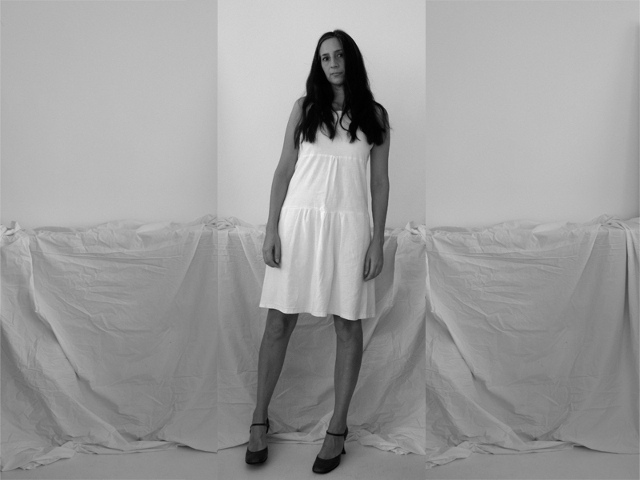
LB: How important is sustainability to each of your projects?
JD: To me, surrounding yourself with things that you love, that you want to keep and use, that is the basis of sustainability. The effort to re-think our belongings or space, can begin a thoughtful process which leads to more purposeful living.
I will admit that people don’t always have those feng shui moments or find their inner zen, but I bring ideas in through the course of conversation when I feel people are open to them. On a more tangible level, I recommend low VOC paints, try to source vintage/antique items and have recommended recycled and reclaimed materials. These days there are also mainstream stores with sustainable options, so it doesn’t have to be a big conversation that a client’s sofa is made from soy based foam and FSC wood – it just is.
LB: How have you been able to weave aspects of therapy into your interior designing? Do you have a favorite success story of a client you were able to help?
JD: Getting to know the clients, assessing what their needs are and creating a plan to meet those needs can be similar to creating a treatment plan in occupational therapy. I have had clients describe how the energy shifted in their space after they arranged the furniture as I suggested. Aside from themselves, these clients quite literally saw that guests were more comfortable and relaxed in their home.
Another client told me that he now stops in the hallway just to look at the living room because it makes him happy. I don’t want to overestimate the importance of creating a home that you love – I know interior design is not saving the world. Yet, there is no doubt that it can have an effect on our lives – positive or negative. If it is something you can control, why not make it positive.
